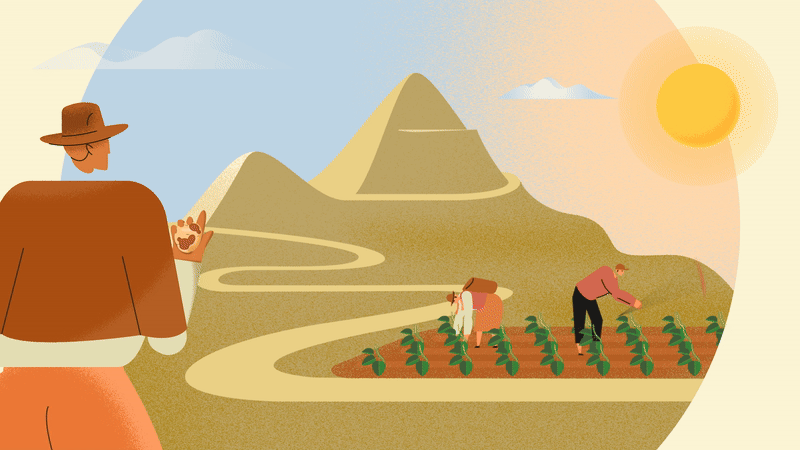CROP CHRONICLES: 15 May 2024
I am fed up with being described as “humble”. I feed more people than any other crop except for wheat and rice, and far more than any other non-cereal. Unlike cereals, I am extremely nutritious, if you treat me right.
A single tuber supples half the vitamin C an adult human needs each day. Plus, I’m high in protein and energy, low in fat, and a rich source of important minerals. OK, I’m also the basis of many highly processed foods that negate some of those benefits, but that’s hardly my fault.
I’m proud to be a potato.
I come from South America where, about 7,000 years ago, people began selecting some of my ancestors that produced larger and more numerous underground storage organs. Yes, you read that right. Those tubers are my way to survive the winter, resources that will get me off to a good start when the weather improves. People discovered they were good to eat and some, better perhaps because they were not as bitter, were favoured. Up and down South America, and especially high in the Andes, generation after generation of farmers selected thousands of different varieties. Long and skinny, round and bulbous, red, white, purple, golden, some good for boiling, others for roasting, yet others for a traditional method of freeze drying that preserves the riches even beyond a single winter: a living tapestry of plant genetic diversity.
In modern times, plant breeders have used that basic biodiversity to create a huge range of potato varieties, suitable for growing wherever people live and optimised for turning into whatever kinds of products people might want to make.
Breeding and selection, of course, involves sexual reproduction, crossing two different plants to mix up their genetics and see whether the resulting offspring have what you are looking for. And because one plants a potato to get more potatoes, the harvest is guaranteed to have those same characteristics that were originally selected. Each separate potato variety is a botanical clone, genetically identical to every other individual of that variety.
Clonal reproduction is a double-edged sword. It preserves desirable characteristics, but it also means that if the variety has any vulnerabilities, those vulnerabilities are shared by every plant. That lack of variety was behind perhaps the greatest food calamity of modern times, the Irish Potato Famine. Almost all the potato varieties planted in Ireland in the 1840s were susceptible to a disease called late blight. When the disease arrived, it wiped out the potato crop. There were other factors too, of course, notably social structures in Ireland and British economic policies, but since so many of my relatives were lost to this horrid disease, the famine killed at least a million people in Ireland and forced another million or more to emigrate.

Once people understood the disease they were able to work out ways of protecting the crop with chemicals, protection that costs the industry USD 1 billion a year. Millions of poorer smallholder farmers, who cannot afford plant protection, instead have to suffer losses estimated at USD 14 billion a year.
Blight was never much of a problem in my heartlands, the high Andes, where it was generally too cold and too dry for the disease to spread. Climate change has made it warmer and wetter, and local varieties are suffering. Of course breeders have long sought blight resistance, but with scant success. Recently they turned to my wild relatives. Researchers produced quite a few crosses that could withstand late blight in the laboratory and then turned to the traditional people of the potato to make the final selection. People from communities in the Parque de la Papa, near Cusco in Peru, grew the candidates and chose the one that performed best and satisfied their discerning palates.

That variety, called CIP-Matilde after a pioneering potato breeder, yields as much as Peru’s premier variety and has now been released.
The Potato Park represents an effort to restore the potato to its rightful position as a central element in Andean society. Scores of varieties that were collected in the Andes, and that subsequently disappeared under pressure from commercial varieties, have been returned from the genebank of the International Potato Center (CIP) and are being looked after in the park. The communities have also sent samples of more than 750 potato varieties, including some from wild relatives, to the Svalbard Global Seed Vault for safe storage. This reflects their belief, in common with many other rural societies around the world, that people have an obligation to save and to share seeds.
With all that history, accumulated cultural significance and modern science, I think I’ve now earned the right to be known as the Noble Potato.
This story is part of Crop Chronicles, a multimedia campaign that uncovers the stories of the crops that feed the world, the people who grow them and the race to adapt them to a changing climate.




